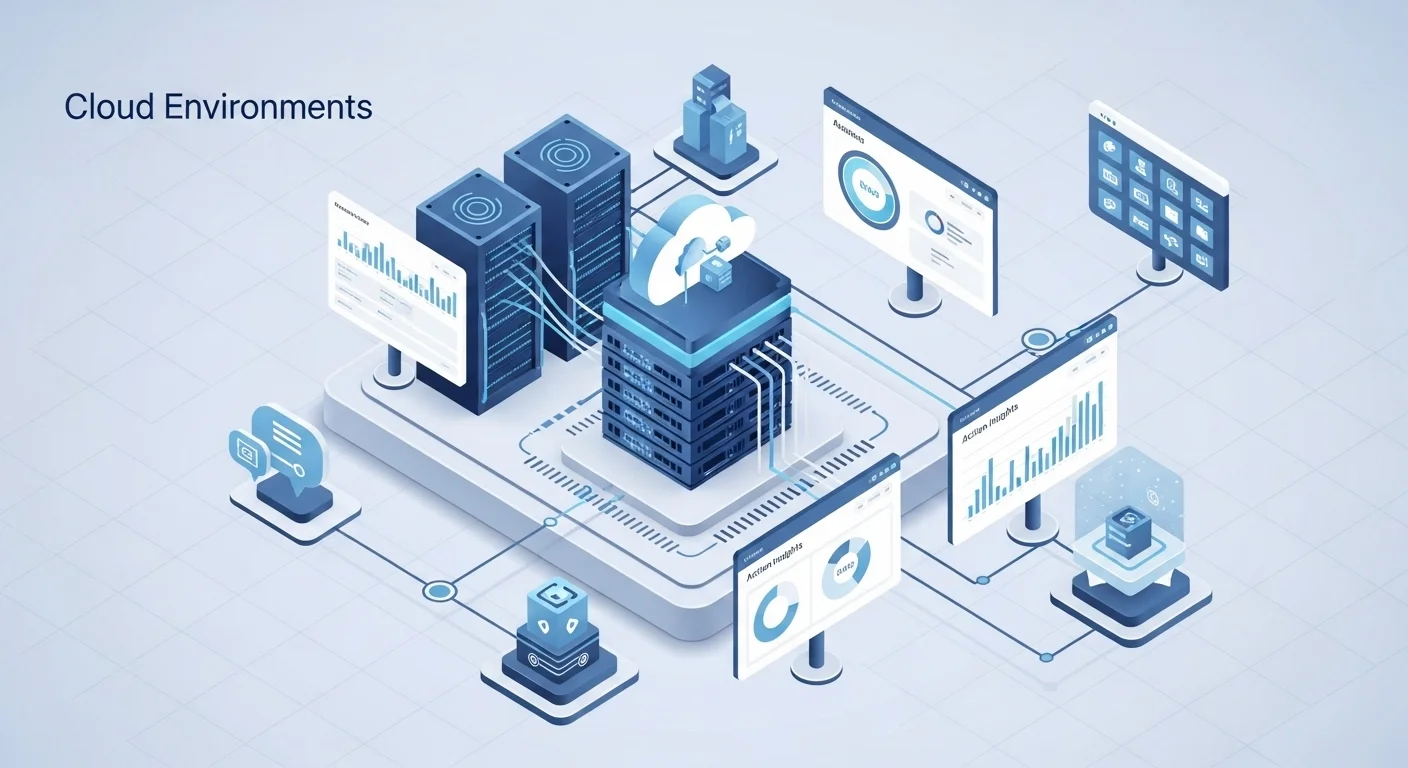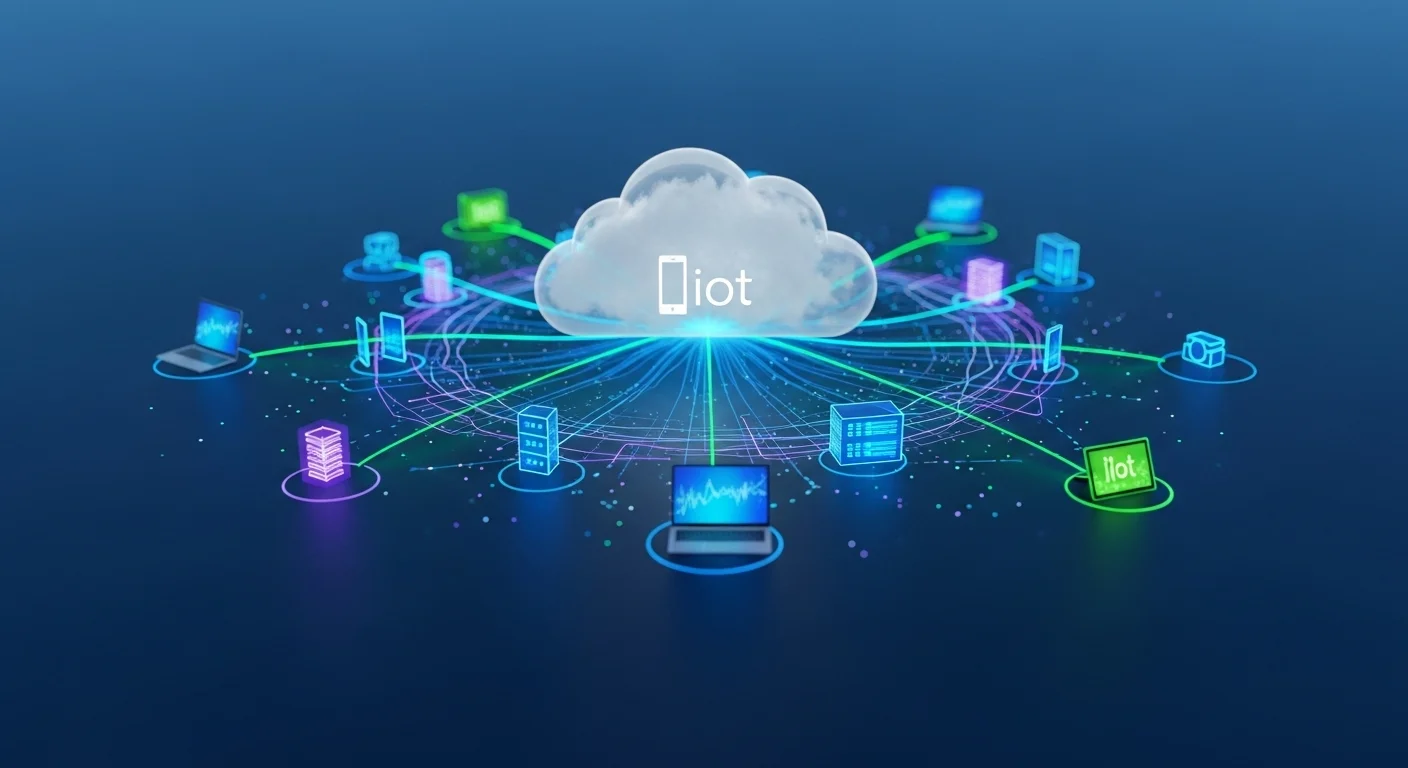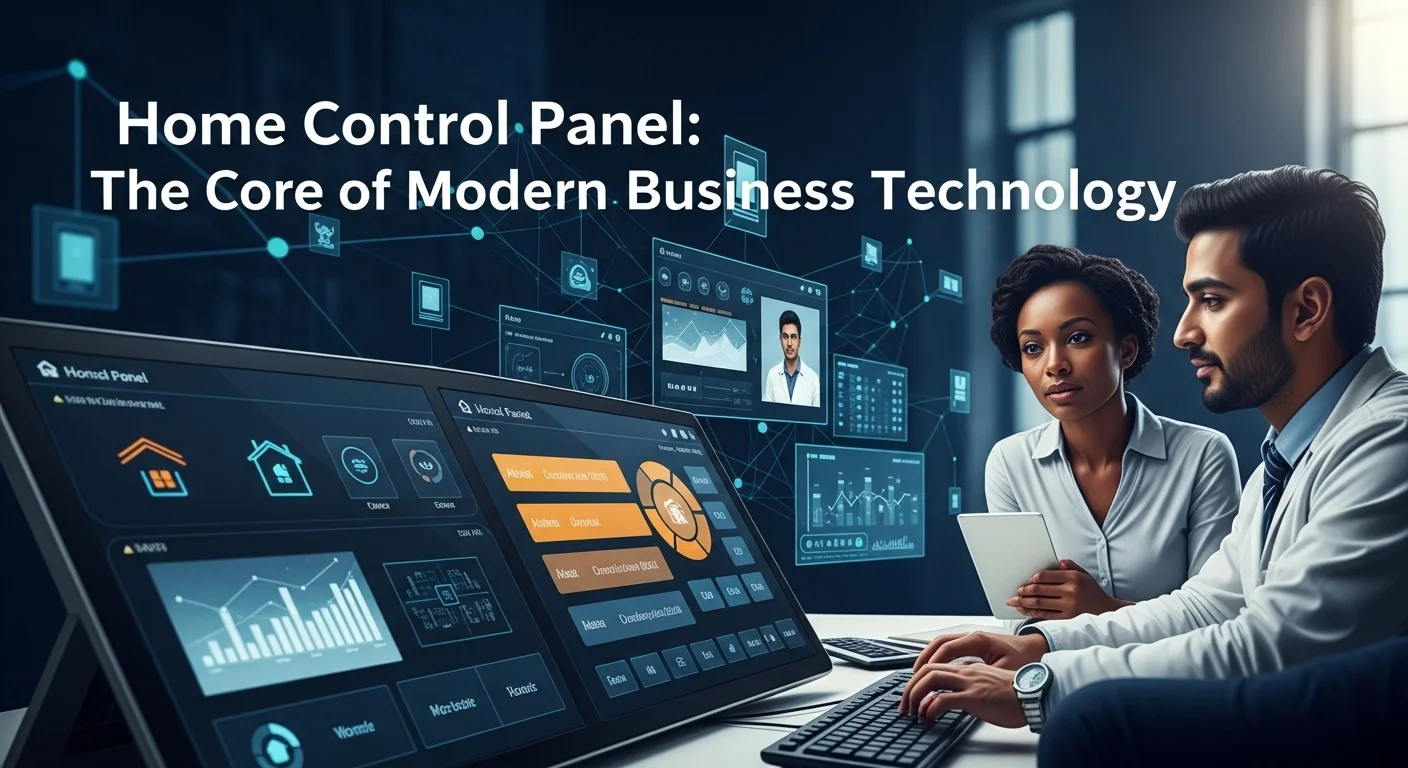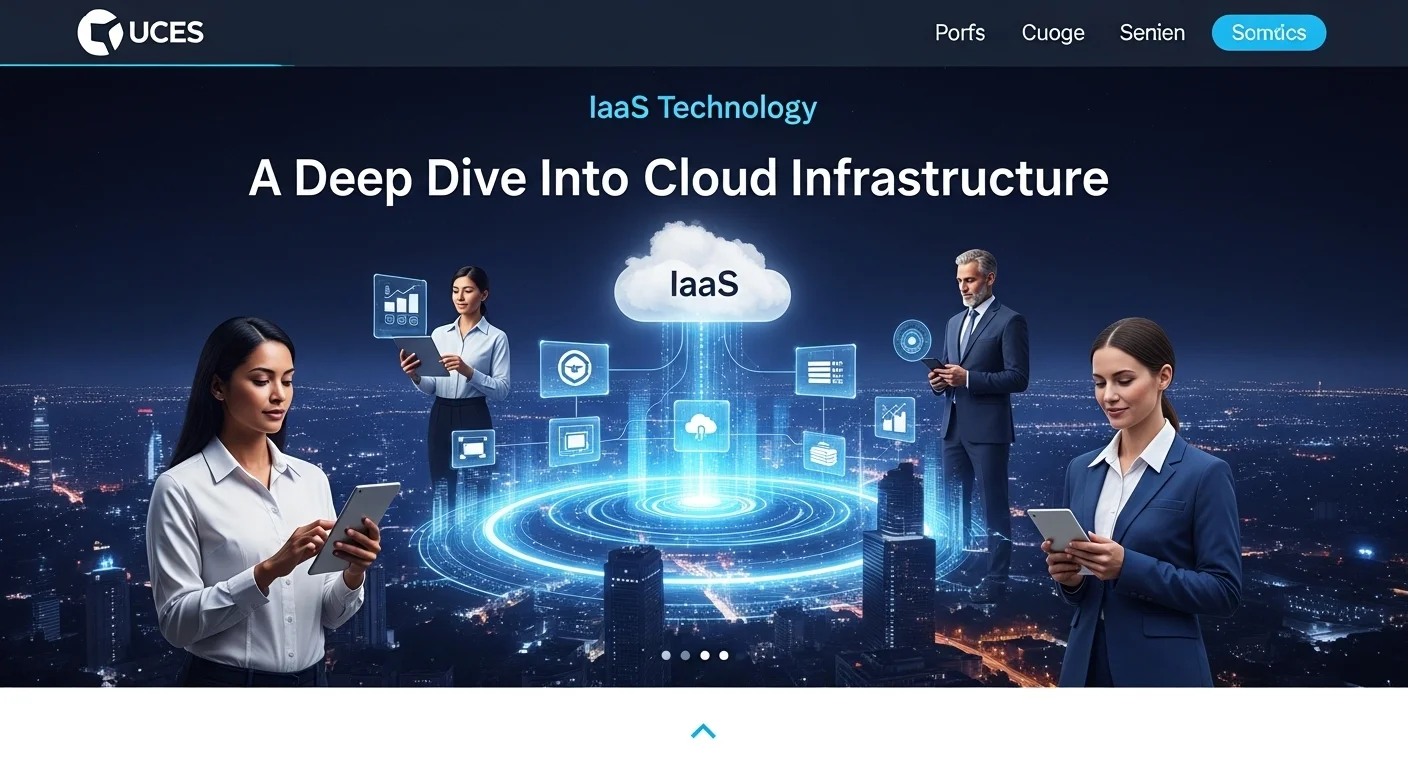Cloud Environment: The Core of Modern Technology

Executive Summary
A cloud environment is a virtual infrastructure that allows businesses and developers to store data and run applications over the internet. This technology has become fundamental for modern enterprises, offering unprecedented scalability, flexibility, and cost-efficiency. By shifting from on-premises hardware to a cloud based environment, companies can rapidly adapt to market changes, innovate faster, and reduce capital expenditure on IT infrastructure. This article delves into the critical aspects of cloud environments, from the foundational concepts to advanced strategies. We will explore the different deployment models, including the robustly controlled private cloud environment and the highly scalable public cloud. Furthermore, we will analyze specific platforms like the Oracle Cloud Environment and dissect the essential components of creating a secure cloud environment. For any tech enthusiast or business leader, understanding the nuances of the cloud software environment is no longer optional—it is essential for survival and growth in the digital age. This comprehensive guide provides the insights needed to navigate and leverage this transformative technology effectively.
Table of Contents
What is Cloud Environment and why is it important in Technology?
In the ever-evolving landscape of digital technology, few concepts have been as transformative as the cloud. But what exactly is a 'cloud environment'? At its core, a cloud environment is a virtualized computing infrastructure accessible over a network, typically the internet. It is a pool of shared resources, including servers, storage, databases, networking, software, and analytics, that can be rapidly provisioned and managed with minimal effort. This technology marks a significant departure from the traditional model where organizations would own and manage their own physical data centers and servers. The importance of this shift cannot be overstated. The adoption of a cloud based environment has become a cornerstone of modern IT strategy, enabling businesses of all sizes to innovate, scale, and compete on a global scale. The fundamental value proposition lies in its ability to provide on-demand resources, a model often compared to a utility like electricity—you only pay for what you use.
The Core Components of a Cloud Environment
To truly grasp the concept, it's essential to understand its building blocks. A cloud environment is built upon the principle of virtualization, which allows a single physical server to be partitioned into multiple virtual machines (VMs). This abstraction of hardware is what makes the cloud so flexible and efficient. The main components include:
- Compute: This refers to the processing power, provided by virtual servers (or instances), that runs applications and executes tasks.
- Storage: Cloud providers offer various types of data storage, from fast object storage for web applications to archival storage for long-term backups.
- Networking: This includes virtual routers, firewalls, load balancers, and dedicated network connections that allow for complex and secure network architectures within the cloud.
- Databases: Managed database services, from traditional SQL to modern NoSQL databases, are offered to handle data management without the administrative overhead.
Types of Cloud Environments: Public, Private, and Hybrid
Not all clouds are the same. The choice of deployment model depends heavily on a company's specific needs regarding security, control, scalability, and cost. There are three primary types:
- Public Cloud: This is the most common model, where cloud services are owned and operated by a third-party provider like Amazon Web Services (AWS), Microsoft Azure, or Google Cloud Platform (GCP). All hardware, software, and other supporting infrastructure are owned and managed by the provider. The key benefits are immense scalability, reliability, and a pay-as-you-go pricing model.
- Private Cloud Environment: A private cloud environment consists of computing resources used exclusively by one business or organization. This environment can be physically located at the company’s on-site data center or hosted by a third-party service provider. A private cloud offers a higher level of security and control, making it the preferred choice for government agencies, financial institutions, and other organizations with sensitive data or strict regulatory compliance requirements. While it provides greater control, it also requires significant investment and expertise to manage.
- Hybrid Cloud: As the name suggests, a hybrid cloud combines a private cloud with one or more public cloud services, with proprietary software enabling communication between each distinct service. This model offers businesses greater flexibility and more data deployment options. For example, a company might use its private cloud environment for sensitive, business-critical operations and a public cloud for high-volume, less-sensitive workloads like web hosting or development environments.
The Criticality of a Secure Cloud Environment
As businesses increasingly migrate their critical data and applications to the cloud, security becomes the foremost concern. A secure cloud environment is not a default state; it is the result of a deliberate and continuous process involving both the cloud provider and the customer. This is known as the 'Shared Responsibility Model'. While the provider is responsible for the security *of* the cloud (i.e., protecting the physical infrastructure), the customer is responsible for security *in* the cloud. This includes configuring access controls, encrypting data, managing user permissions, and securing applications. Key pillars of a secure cloud environment include:
- Identity and Access Management (IAM): Strictly controlling who can access what resources.
- Data Encryption: Protecting data both at rest (when stored) and in transit (when moving across the network).
- Network Security: Using virtual private clouds (VPCs), firewalls, and other tools to isolate resources and control traffic flow.
- Compliance: Adhering to industry standards and regulations like GDPR, HIPAA, and PCI DSS.
Without a robust security posture, the benefits of the cloud can be quickly overshadowed by the risks of data breaches, service disruptions, and financial loss. Therefore, building and maintaining a secure cloud environment is a non-negotiable aspect of cloud adoption.
Exploring Specific Platforms: The Oracle Cloud Environment
While AWS, Azure, and GCP are often called the 'big three', other major players offer compelling alternatives, often with specialized strengths. The Oracle Cloud Environment, officially known as Oracle Cloud Infrastructure (OCI), is a prime example. OCI is engineered to be a 'Generation 2' cloud, designed from the ground up to be a better cloud for every application. It places a strong emphasis on security, performance, and cost-effectiveness, particularly for enterprise-grade workloads. Key differentiators of the Oracle Cloud Environment include:
- Bare Metal Servers: OCI offers bare metal instances, which are dedicated physical servers, providing customers with maximum performance, isolation, and control. This is ideal for high-performance computing (HPC) or database-intensive applications.
- Autonomous Database: Oracle's flagship database product is available as a fully managed, self-driving, self-securing, and self-repairing service in the cloud. This significantly reduces the administrative burden on database administrators.
- Enterprise Focus: Oracle leverages its long history of serving large enterprises to provide services and support tailored to complex business needs, including seamless migration paths for existing Oracle software customers.
For businesses already invested in the Oracle ecosystem, the Oracle Cloud Environment provides a powerful and logical extension of their IT infrastructure, offering a highly secure and performant platform.
The Role of the Cloud Software Environment
Beyond infrastructure (IaaS) and platforms (PaaS), the cloud has revolutionized how software is delivered and consumed through Software-as-a-Service (SaaS). A cloud software environment refers to the ecosystem where applications are developed, deployed, and run. This has given rise to new development paradigms like DevOps, microservices, and serverless computing. A cloud software environment enables:
- Agility and Speed: Developers can quickly provision development and testing environments, leading to faster development cycles and quicker time-to-market.
- Continuous Integration/Continuous Deployment (CI/CD): Automated pipelines build, test, and deploy code changes, improving reliability and freeing up developers to focus on writing code.
- Scalability: Applications can be designed to automatically scale based on demand, ensuring a smooth user experience even during traffic spikes.
In essence, the cloud software environment has democratized software development, allowing small teams to build and deploy applications with the same power and reach as large enterprises. It is the engine of digital innovation, powering everything from mobile apps to complex AI platforms. The transition to a cloud based environment represents a fundamental shift in how technology is utilized, offering a powerful combination of efficiency, agility, and innovation that is reshaping industries worldwide.

Complete guide to Cloud Environment in Technology and Business Solutions
Navigating the vast landscape of cloud technology requires more than a basic understanding; it demands a strategic approach to architecture, migration, and management. This guide provides a deep dive into the technical methods and business techniques that enable organizations to build and operate a successful cloud based environment. We will explore how to choose the right services, design resilient architectures, and manage costs effectively, while ensuring the creation of a secure cloud environment. A well-planned cloud strategy is the difference between simply using the cloud and truly harnessing its transformative power for business growth.
Architecting for the Cloud: Beyond 'Lift and Shift'
The initial journey to the cloud for many organizations begins with a 'lift and shift' migration, where existing applications and data are moved from on-premises servers to cloud infrastructure with minimal or no changes. While this approach can be fast, it often fails to take full advantage of the cloud's native capabilities. A more mature approach involves re-architecting applications for the cloud. Key architectural patterns include:
- Cloud-Native Design: This involves building applications from the ground up using technologies like containers (Docker, Kubernetes) and microservices. A microservices architecture breaks down a large application into smaller, independent services that communicate via APIs. This makes the application easier to develop, scale, and maintain.
- Serverless Computing: This is a revolutionary model where the cloud provider dynamically manages the allocation of machine resources. Code is run in response to events, and developers don't need to provision or manage any servers. Services like AWS Lambda and Azure Functions are ideal for event-driven workloads and can be extremely cost-effective.
- Designing for Failure: A core principle of cloud architecture is to assume that components will fail. Resilient systems are designed to withstand and recover from failures automatically. This is achieved through techniques like redundancy (deploying resources across multiple availability zones or regions), automated failover, and self-healing mechanisms.
A Deep Dive into the Private Cloud Environment
While public clouds offer incredible scale, the private cloud environment remains a critical option for many businesses. A private cloud is a single-tenant environment, meaning the organization does not share resources with any other entity. This provides the highest level of control and security. There are two main ways to deploy a private cloud:
- On-Premises Private Cloud: The organization owns, manages, and maintains the entire infrastructure within its own data center. This requires significant capital investment and a skilled IT team but offers maximum control over hardware and software. Technologies like VMware vSphere and OpenStack are commonly used to build and manage on-premises private clouds.
- Hosted Private Cloud: A third-party provider owns and hosts the cloud infrastructure, but it is dedicated to a single customer. This model offloads the burden of managing the physical hardware while still providing the isolation and security benefits of a private cloud.
The decision to use a private cloud environment is often driven by stringent regulatory compliance (like HIPAA for healthcare or PCI DSS for finance), data sovereignty requirements, or the need to support legacy applications that are not easily migrated to a public cloud. It offers a way to modernize IT infrastructure while retaining granular control.
Technical Comparison of Major Cloud Providers
Choosing a cloud provider is a major strategic decision. While AWS, Azure, GCP, and Oracle all offer a similar core set of services, they have distinct strengths and weaknesses.
- Amazon Web Services (AWS): As the market leader, AWS has the most extensive portfolio of services and the largest global footprint. Its strengths lie in its mature ecosystem, vast community support, and deep feature set. It is often the default choice for startups and companies prioritizing innovation and a wide array of tools.
- Microsoft Azure: Azure's primary advantage is its seamless integration with Microsoft's enterprise software stack, including Windows Server, Office 365, and Active Directory. This makes it a natural choice for organizations that are heavily invested in Microsoft technologies. Azure also has strong hybrid cloud capabilities with its Azure Arc and Azure Stack offerings.
- Google Cloud Platform (GCP): GCP is renowned for its excellence in networking, data analytics, machine learning (AI/ML), and containers (it is the original home of Kubernetes). Businesses that are data-intensive or looking to leverage cutting-edge AI capabilities often gravitate towards GCP.
- Oracle Cloud Environment (OCI): As discussed, the Oracle Cloud Environment excels in running high-performance and enterprise-grade workloads. Its focus on bare metal servers, high-performance networking, and its Autonomous Database makes it a compelling choice for large enterprises, especially those running Oracle databases and applications. OCI is also known for its competitive and predictable pricing.
Mastering the Cloud Software Environment: DevOps and CI/CD
The true potential of the cloud is unlocked when development and operations teams work together in a DevOps culture. The cloud software environment is the playground for DevOps, enabling automation and collaboration. A critical component of this is the CI/CD pipeline:
- Continuous Integration (CI): This is the practice of developers frequently merging their code changes into a central repository, after which automated builds and tests are run. This helps to identify and address bugs more quickly. Tools like Jenkins, GitLab CI, and AWS CodePipeline are used to implement CI.
- Continuous Deployment/Delivery (CD): Continuous Delivery is the extension of CI, where code changes are automatically prepared for a release to a production environment. Continuous Deployment goes a step further by automatically deploying every validated change to users. This process dramatically accelerates the release cycle.
By leveraging a robust cloud software environment, organizations can release new features and updates to customers in a matter of hours or days, rather than weeks or months. This agility is a massive competitive advantage in today's fast-paced digital world.
Ensuring a Secure Cloud Environment: Advanced Techniques
Building on the basics of the shared responsibility model, advanced security requires a multi-layered, defense-in-depth strategy. This means implementing overlapping security controls to protect assets.
- Cloud Security Posture Management (CSPM): These are automated tools that continuously monitor cloud environments for misconfigurations and compliance risks. They can detect issues like publicly accessible storage buckets or overly permissive IAM policies and provide remediation guidance.
- Cloud Workload Protection Platforms (CWPP): These tools are designed to protect the specific workloads running in the cloud, such as virtual machines, containers, and serverless functions. They provide capabilities like vulnerability scanning, intrusion detection, and anti-malware.
- Security Information and Event Management (SIEM): A SIEM system aggregates log data from across the cloud environment, uses analytics to identify potential security threats, and alerts security teams to suspicious activity.
Ultimately, a secure cloud environment is not just about tools, but also about people and processes. Regular security training for all employees, a strong incident response plan, and a culture of security awareness are just as important as any technology. By combining a sound architectural foundation with robust security practices and a deep understanding of the available platforms, businesses can build a cloud based environment that is not only powerful and scalable but also resilient and secure.

Tips and strategies for Cloud Environment to improve your Technology experience
Successfully operating within a cloud environment goes beyond initial migration and setup; it requires continuous optimization, strategic management, and adherence to best practices. This section provides actionable tips and advanced strategies to enhance your technology experience, whether you are managing a complex multi-cloud setup, a dedicated private cloud environment, or a specialized Oracle Cloud Environment. By focusing on cost management, performance tuning, and robust security, you can maximize the return on your cloud investment and ensure your infrastructure is efficient, resilient, and secure.
Financial Operations (FinOps): Mastering Cloud Cost Management
One of the biggest challenges in any cloud based environment is controlling costs. The pay-as-you-go model offers flexibility, but it can also lead to unexpected bills if not managed carefully. FinOps is a cultural practice and framework that brings financial accountability to the variable spend model of the cloud, enabling teams to make trade-offs between speed, cost, and quality. Key FinOps strategies include:
- Visibility and Tagging: You can't manage what you can't see. Implement a comprehensive tagging strategy for all your cloud resources. Tags are metadata labels that can be used to categorize resources by project, department, or application. This allows you to accurately track costs and allocate them to the appropriate cost centers.
- Rightsizing and Idle Resource Management: Regularly analyze resource utilization. Many virtual machines are often over-provisioned. Use cloud provider tools (like AWS Compute Optimizer or Azure Advisor) to identify and downsize these instances to a more appropriate, cost-effective size. Similarly, find and terminate idle resources like unattached storage volumes or stopped VMs that are still incurring costs.
- Leverage Reserved Instances and Savings Plans: For predictable, long-term workloads, commit to a certain level of usage for a one- or three-year term in exchange for a significant discount (up to 70% or more) compared to on-demand pricing. This is one of the most effective ways to reduce costs for stable applications.
- Automate Cost Policies: Use scripts or third-party tools to automatically enforce cost-saving policies, such as shutting down development environments outside of business hours or deleting old snapshots.
Performance Optimization for a Superior User Experience
A slow or unresponsive application can be just as damaging as an outage. Performance tuning in the cloud involves optimizing every layer of your architecture.
- Utilize Auto-Scaling: Configure auto-scaling groups for your applications. This allows your infrastructure to automatically add or remove servers based on real-time demand, ensuring you have enough capacity to handle traffic spikes without over-provisioning during quiet periods.
- Implement a Content Delivery Network (CDN): A CDN, like Amazon CloudFront or Cloudflare, caches your content in multiple geographic locations around the world. When a user requests your content, it is served from the location closest to them, dramatically reducing latency and improving load times.
- Choose the Right Storage Tier: Cloud providers offer various storage classes with different performance characteristics and costs (e.g., SSD-based for high performance, HDD-based for lower cost, and archival for long-term storage). Matching your workload's performance requirements to the right storage tier is crucial for both performance and cost. For example, use high-IOPS storage for your primary database and low-cost object storage for backups.
- Database Performance Tuning: In any cloud software environment, the database is often the bottleneck. Use managed database services that offer performance insights, implement proper indexing, and use database caching solutions like Redis or Memcached to reduce the load on your primary database.
Advanced Strategies for a Secure Cloud Environment
Security is a journey, not a destination. As threats evolve, so must your defenses. Beyond the fundamentals, consider these advanced strategies to harden your secure cloud environment.
- Adopt a Zero Trust Architecture: The traditional 'castle-and-moat' security model is no longer sufficient. A Zero Trust model operates on the principle of 'never trust, always verify'. It requires strict identity verification for every person and device trying to access resources on a private network, regardless of whether they are sitting within or outside of the network perimeter.
- Implement DevSecOps: This practice involves integrating security into every stage of the DevOps lifecycle. Security is not an afterthought but a shared responsibility of development, security, and operations teams. This includes static and dynamic code analysis, dependency scanning, and security testing within the CI/CD pipeline.
- Leverage AI and Machine Learning for Threat Detection: Modern security tools use AI to analyze vast amounts of data and identify anomalous patterns that may indicate a sophisticated cyberattack. These systems can detect threats faster and more accurately than human analysts alone.
- Regularly Conduct Penetration Testing: Hire ethical hackers to perform penetration tests on your cloud environment. This simulated cyberattack can help you identify vulnerabilities in your systems, applications, and processes before malicious actors can exploit them.
Best Practices for the Oracle Cloud Environment and Private Cloud
While many principles are universal, specialized environments have unique considerations. For users of the Oracle Cloud Environment, it is crucial to leverage the Autonomous Database features for automated patching and security. Maximizing the performance of bare metal servers for database workloads can also provide a significant competitive edge. For those managing a private cloud environment, the focus should be on lifecycle management and automation. Regularly updating the underlying virtualization software (like OpenStack or VMware) is critical for security and stability. Implementing a robust automation and orchestration layer will provide the 'cloud-like' self-service experience that users expect. For more in-depth technical guidance, a quality external resource is the Gartner Cloud Computing Glossary, which provides authoritative definitions and concepts. By embracing these strategies—from the financial discipline of FinOps to the proactive defense of Zero Trust—organizations can elevate their use of cloud technology from a simple utility to a powerful strategic enabler of business success.
Expert Reviews & Testimonials
Sarah Johnson, Business Owner ⭐⭐⭐
The information about Cloud Environment is correct but I think they could add more practical examples for business owners like us.
Mike Chen, IT Consultant ⭐⭐⭐⭐
Useful article about Cloud Environment. It helped me better understand the topic, although some concepts could be explained more simply.
Emma Davis, Tech Expert ⭐⭐⭐⭐⭐
Excellent article! Very comprehensive on Cloud Environment. It helped me a lot for my specialization and I understood everything perfectly.



